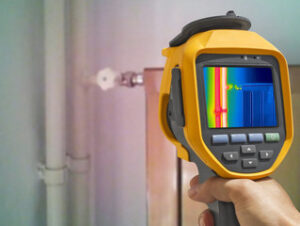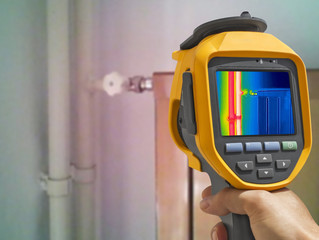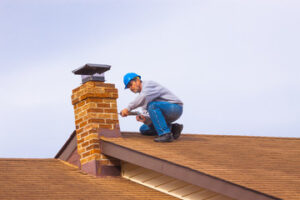Undetected leaks can cause structural damage, increase moisture levels in buildings, and encourage the growth of mildew and mold. They can also waste water and rack up your water bills.
Luckily, professional technicians can use sophisticated tools to detect hidden leaks and prevent costly damage. But how much does leak detection cost? Visit https://www.leakops.com/ to learn more.
Considering that water is one of the most valuable resources, it’s important to prevent water wastage and leakage in your home or workplace. This way, you can save money on your utility bills and prevent structural damage. The best way to do this is by hiring a professional who can use advanced tools and technology to detect the location of any leaks in your water supply pipes.
Water leaks can be difficult to identify and can have various implications, such as increased water bills, damp walls or ceilings, mold growth, and even potential flooding. It is also important to fix these leaks immediately so that they don’t worsen over time. Leaking water pipes are a serious threat to your health, as they can spread fungi and bacteria that can cause respiratory issues. If you suspect that there is a leak in your plumbing, it’s best to call a plumber right away to get the problem fixed.
Since most water pipe systems are underground, they’re often at the mercy of environmental factors such as ground movement and nearby obstructions. These factors can cause corrosive wear and tear, leading to leaks or cracks. This is why it’s important to have a dependable and efficient water leak detection system in place.
There are several different ways to detect water leaks, such as acoustic leak detection and radar-based methods. Acoustic leak detection is a cutting-edge technique that uses sound to pinpoint the exact location of a leak. It works by detecting the unique noise created when fluid escapes from a pressurized pipe. This sound can be heard as a hissing or whooshing noise, and the leak can be located by determining which area produces the highest volume. This method works best when there is little ambient noise, such as at night or when the weather is dry.
Another popular method for detecting leaks is to use radar-based methods, which are effective at locating the source of a leak. These methods are used to monitor the pressure at a number of points along the pipeline and create a hydraulic gradient graph. If there is a sudden kink in the gradient line, it indicates that there is a leak at that point.
Wastewater Pipes
If you hear the faint sound of water running through your walls, it could be a sign that your sewer pipes are leaking. It’s not just a nuisance—these leaks can cause serious damage to your property and even pose health hazards. If the leak isn’t addressed quickly, it can lead to flooding and sewage backups that will require costly repair and cleanup.
In order to identify a wastewater pipe leak, you’ll want to hire professionals that offer Leak Detection services. These specialists use specialized equipment to identify the source of the leak and determine its exact location. This will help you get the repairs needed as quickly and accurately as possible.
Wastewater line leaks can be more dangerous than plumbing leaks because they are tainted with bacteria and other substances that can make people sick. If left undetected, a wastewater leak can contaminate the entire property and even lead to structural and MEP system damage.
Leak detection for wastewater pipes can be accomplished in a number of ways. One way is to conduct static leak isolation testing. This involves filling the pipe with a special liquid that can “sense” a leak by measuring its density and pressure. Another method is to use a combination of both static and dynamic leak detection systems. This can involve using flow meters and pressure gauges to bracket the leak’s location, then mobile acoustic sensors can be run along this bracketed length to pinpoint its exact location.
Other forms of leak detection include using nitrogen to test for hydraulic leaks. This is a process that’s used in the oil industry to test for cracks and leaks in pipelines, storage tanks, and other conduits. Nitrogen is an inert gas that can prevent corrosion reactions and keep water vapor and oxygen away from sensitive equipment.
In addition to leak detection services for water supply and wastewater pipes, many companies also provide leak detection for natural gas lines as well as propane and gasoline lines. Because these types of leaks can be dangerous to employees and customers, they must be detected as soon as possible so that repairs can be made as quickly as possible.
HVAC Pipes
HVAC pipes transport a variety of fluids including air, water, refrigerant, and steam to and from the HVAC system’s components. These piping systems often run underground or through attics and crawl spaces, which means they can be difficult to inspect. To help make the process easier, technicians can use sonic leak detection to locate the source of the leak. This technique sends out sound waves that can be heard by a trained specialist, and the noises are decoded to identify the exact location of the leak. Additionally, specialized fluorescent dye solutions can also be used to trace the path of a leaky liquid.
While some types of leaks are easy to detect, such as water gushing out from a broken pipe, others can go undetected for long periods of time. This can lead to extensive damage, expensive repairs, and high energy bills. Fortunately, Leak Detection can help prevent these issues from occurring by monitoring your home’s plumbing for abnormalities.
Among the most common leaks in an HVAC system are those caused by cracked or misaligned ductwork. These leaks are typically caused by a loose connection or an impurity in the brazing, joining, or manufacturing process. Depending on the severity of the issue, it may be necessary to replace the affected part.
Another common leak in an HVAC system is a refrigerant leak. This type of leak is more difficult to pinpoint, but it can be identified by observing oil spots on the compressor or ductwork joints. Alternatively, the technician can perform a bubble test by filling the piping system with water and watching for the formation of bubbles.
Some of the most advanced technologies available for detecting leaks in residential plumbing systems include thermal imaging and LiDAR technology. The latter works by sending out laser pulses that reflect off objects, allowing the technician to create high-resolution maps of an area. Using this data, the technician can accurately locate the source of a leak, even if it’s hidden in the walls of your home.
Plumbing Pipes
When plumbing pipes are leaking, they can cause major problems. Not only do they waste water, but they can also lead to structural damage and other costly repairs. To prevent this, it is important to have the right leak detection equipment on hand. Luckily, there are many different devices to choose from that can help you find hidden leaks in your pipes.
Acoustic leak detection is one such device. This technology zeroes in on the noise created by leaking, pressurized pipes. The sound waves produced by a leak in a pipe can create a whooshing, hissing, or thumping sound. These sounds travel up through the pipe and are picked up by acoustic sensors on the outside of the pipe. The sensor then sends the data to a technician, who can pinpoint the location of the leak.
Another great tool for detecting leaking plumbing pipes is a thermal imaging camera. These cameras are attached to long flexible lines that can be inserted into faucets and other plumbing outlets. Then, the images are relayed back to a monitor where you and your plumber can see the condition of the pipes. The camera can also spot any wet spots around your home that might indicate a plumbing problem.
Lastly, there is ground penetrating radar (GPR), which can be used in both indoor and outdoor environments. GPR sends radar energy into the ground, and analyzes the strength and time delay of any reverberations that come back up through the surface. This allows technicians to locate changes in underlying soil and structural anomalies that may be caused by leaks.
Whether you are looking for a leak detector for residential or commercial use, there is a wide variety of options available to you. Using the right tools will help you save on your utility bills and keep your property safe from structural damage caused by leaky pipes. By catching and fixing leaks early, you can avoid costly repairs and conserve our precious water resources. To start, try running a simple test by turning off all water-using appliances and checking your water meter at several intervals over a few hours. If the meter readings are consistently increasing, you probably have a leak.


